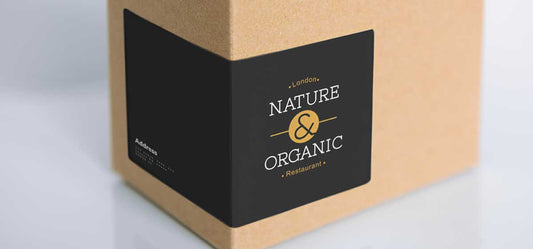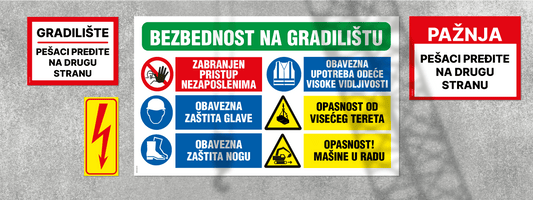
From Pixel to Perfection: A Guide to Vectoring Your Stickers and Labels
Share
Have you ever wondered why some stickers look perfect while others appear blurry or grainy? The secret lies in a process called vectorization, which is key to high-quality sticker printing and self-adhesive label production . In this guide, we'll take you on a journey from pixelated images to flawless graphics, revealing how to achieve professional results in your projects.
How to vectorize a bitmap: AI tools, online solutions and why it matters
1. Introduction: What is vectorization and why is it important
In the world of digital design and printing, we often encounter two types of graphics: bitmaps and vector images. If you've ever tried to enlarge an image to print stickers or self-adhesive labels, you've probably noticed that it loses quality, becomes pixelated or "grainy". This happens because most of the images we see on the Internet are bitmaps - images made up of pixels, tiny colored squares that together make up the entire image.
In contrast, vector graphics consist of mathematically defined shapes. Instead of pixels, vector images use lines, curves, and geometric shapes to display graphics. This fundamental difference means that vector images can be enlarged infinitely without loss of quality. Whether you're printing a small sticker or a large billboard advertisement, vector graphics will always look crisp and clear.
This is exactly why vectorization - the process of converting a bitmap into a vector graphic - is crucial for high-quality printing of stickers and labels. When ordering online from Stickershop or any other print shop, using vector files ensures that your products look professional and high quality, regardless of print size.

2. Basics of vectorization
Vectorization involves analyzing the bitmap and creating vector shapes that represent it as faithfully as possible. This process can be manual or automatic:
Manual vectorization:
- The designer carefully draws the shapes over the original image
- Provides maximum control over the final result
- It is time-consuming, especially for complex images
- Ideal for logos and simple graphics
Automatic vectorization:
- Uses specialized software for bitmap analysis and creation of vector shapes
- It is faster and suitable for more complex images
- Results may vary and sometimes require additional adjustment
- Great for photos and images with lots of detail
For the purposes of online ordering at Stickershop, automatic vectorization is often the fastest and most practical solution, especially if you have no experience with hand-drawing vector graphics.
3. Vectorization with the help of Corel Draw
Corel Draw, as one of the leading vector graphics software, offers a powerful vectorization tool called PowerTRACE. This tool is extremely useful for preparing graphics for sticker printing and making self-adhesive labels. To vectorize an image in Corel Draw, first import a bitmap, then click "Trace Bitmap" in the top bar and select the vectorization method that best suits your image. You can choose from options like "Line Art", "Logo", or "Detailed Logo" for simpler graphics, or "Photorealistic" for more complex images. Corel Draw allows you to fine-tune parameters such as detail, smoothing, and number of colors, which is especially useful when preparing a design for label printing. After vectorization, you can further edit the result using Corel Draw's vector drawing tools, ensuring that your self-adhesive labels look perfect at any size.
4. Vectorization in professional tools: Adobe Illustrator
Adobe Illustrator is the industry standard for working with vector graphics and offers a powerful tool for vectorization - Image Trace. This tool uses advanced algorithms to analyze bitmaps and create vector shapes. Here's a step-by-step guide on how to use it:
1. Open the image in Illustrator: File > Open and select your bitmap.
2. Select an image and click "Image Trace" in the top bar or Window > Image Trace to open the panel.
3. In the "Image Trace" panel, select the preset that matches your image:
- "Logo" for simple graphics with few colors
- "Low Fidelity Photo" for images with less detail
- "High Fidelity Photo" for photos with a lot of detail
4. Adjust the options as needed:
- Colors: Specify the number of colors in the final vector image
- Paths: Control the precision of contour tracing
- Corners: Adjust the sharpness of the corners
- Noise: Reduce to remove fine details
5. Click "Expand" in the top bar to convert the traces into editable vector shapes.
6. Additionally edit the vector shapes as needed using the direct selection tools.
This process gives you a vector version of your image, ideal for printing stickers in any size. Remember to save the file in the appropriate format (.ai, .eps or .svg) for best printing results.
5. Online tools for vectorization
For those who don't have access to professional tools like Adobe Illustrator, there are a number of online solutions that can help vectorize images for sticker and self-adhesive label printing:
Vector Magic (vectormagic.com):
- Offers extremely precise vectorization
- Ideal for complex images and logos
- Paid service, but offers a trial period
- Allows fine-tuning of results
Vectorizer.io:
- Free tool with good results for simpler graphics
- Easy to use, with basic setup options
- Limited number of colors in free version
AutoTracer.org:
- Another free solution, suitable for fast vectorization
- Offers several adjustment options, including number of colors and edge detection threshold
- Results may vary, so experimentation is required
Canva (canva.com):
Although primarily a design tool, Canva also offers basic vectorization features:
1. Import the bitmap into the Canva project
2. Click on the image and select "Effects" > "Background Remover"
3. Use "Edit Image" > "Crop" to remove unwanted parts
4. Export the image as an SVG file
This method is useful for simple logos or icons that you plan to use on stickers, but is not suitable for complex images or photos.
6. Practical tips for better vectorization
To get the best results when vectorizing images for sticker and label printing, consider the following tips:
- Start with the highest quality bitmap possible: Higher resolution and cleaner image will result in better vectorization.
- Remove the background if possible: A clean image with no background will give more accurate results.
- Experiment with settings: Every image is different, so try different options for the best results.
- Simplify complex images: Sometimes it's better to remove small details before vectorizing.
- Use more colors for photos: More colors will give a more realistic result for complex images.
- For complex images, consider a combination of automatic vectorization and manual corrections.
- Check the result: Always inspect the vectorized image closely to spot any errors or irregularities.
7. Application of vectorized images in the design of stickers and labels
Vectorized images are ideal for self-adhesive label printing for several reasons:
Scalability:
- They can be increased or decreased without losing quality
- The same file can be used for small stickers and large posters
Editability:
- Easy to change colors and shapes
- Elements from different vector images can be combined
Print Quality:
- They give sharper edges and purer colors when printing
- They are ideal for printing that requires high precision, such as screen printing
Smaller file size:
- Vector files are often smaller than high resolution bitmaps
- It is easier to send them by e-mail or upload them to print servers
When ordering stickers online at Stickershop, it is always better to send a vector file to ensure the best possible print quality, regardless of the size of the sticker. Vector formats like .ai, .eps or .svg are preferred by most professional printers.
Practical application:
1. Logos on products: Vector logos are easily adapted to different package sizes.
2. Product Labels: Clear text and graphics ensure readability of product information.
3. Decorative stickers: Complex designs retain their sharpness even on large formats.
4. QR codes: Vector QR codes are always readable, even when they are small.
8. Conclusion: The importance of vectorization in modern design
Vectorization has become a key skill in modern digital design, especially when it comes to preparing graphics for print. Whether you use professional tools like Adobe Illustrator or online solutions, mastering vectorization will allow you to create high-quality stickers and labels that look great at any size.
The advantages of vectorization are numerous:
- Consistent quality regardless of print size
- Flexibility in design and subsequent changes
- A more professional appearance of the final product
- Saving time and money by avoiding printing errors
Next time you order stickers online, remember to vectorize your images. Your products will look better and you will have peace of mind knowing that the quality will be at the highest level.
Experiment with different vectorization tools and techniques to find what works best for you. With a little practice, you'll soon be able to turn any image into the perfect vector graphic for your stickers and labels.
Remember, the quality of your stickers and labels directly affects the perception of your brand. Investing time in properly preparing graphics through vectorization will pay off many times over in the professional appearance of your products and customer satisfaction.



